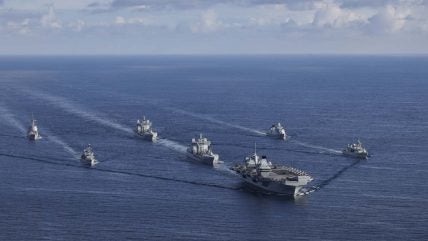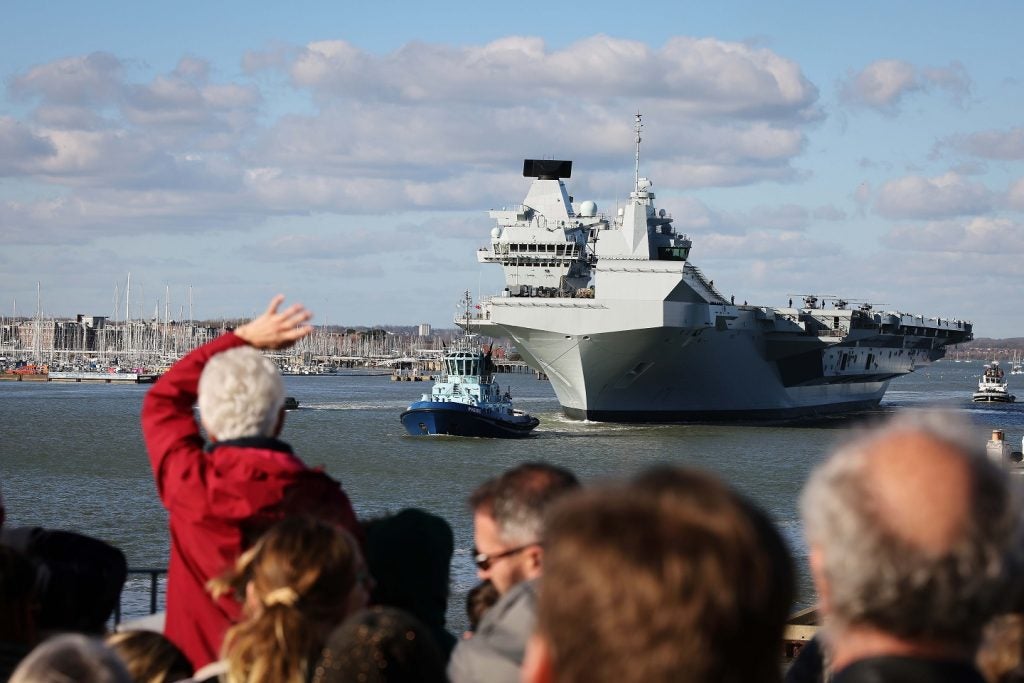
The initial PHOTEX exercise conducted in late-February, when the UK Royal Navy’s Queen Elizabeth-class aircraft carrier HMS Prince of Wales was joined by Nato warships off the UK coast, demonstrated a capability that no other European alliance member can offer – aircraft carrier redundancy.
Joining HMS Prince of Wales was the Royal Navy Type 23 frigate HMS Portland and tankers RFA Tideforce and Tidespring, along with the Royal Canadian Navy Halifax-class frigate HMCS Charlottetown, the Spanish Navy Alvaro de Bazan-class air defence frigate SNS Cristobal Colon, and Danish Navy’s Iver Huitfeldt-class frigate HMDS Niels Juel.
The newly formed carrier strike group then began serials related to Exercise Joint Warrior, which is one aspect of the larger Exercise Steadfast Defender, which will see Nato countries across Scandanvia and northern Europe test operational practices. HMS Prince of Wales was placed under Nato command for the first time since 2022.
However, the opportunity for HMS Prince of Wales to participate in the exercise was originally due to fall to its sister ship HMS Queen Elizabeth, which was forced to pull out due to emergent issues arising during a routine inspection of its starboard shaft prior to departure.
With HMS Queen Elizabeth out of action, HMS Prince of Wales was brought up to speed over the course of several days in order to enable the UK’s flagship presence in the naval element of Steadfast Defender, avoiding a potentially embarrassing void at the heart of Nato carrier strike group.

Across the Nato Alliance, only the United States has a redundancy in aircraft carriers, with European nations such as France, Italy, and Spain each operating a single fixed-wing, fast-jet flattop. With two aircraft carriers of the same class, the UK is able to provide, when maintenance schedules allow, a degree of backup to its own carrier commitments.
How well do you really know your competitors?
Access the most comprehensive Company Profiles on the market, powered by GlobalData. Save hours of research. Gain competitive edge.

Thank you!
Your download email will arrive shortly
Not ready to buy yet? Download a free sample
We are confident about the unique quality of our Company Profiles. However, we want you to make the most beneficial decision for your business, so we offer a free sample that you can download by submitting the below form
By GlobalDataA significant amount of debate surrounding the development and build of the two Queen Elizabeth-class aircraft carriers for the Royal Navy, with consideration given to reducing the programme to just a single vessel, modified to a conventional take-off and landing configuration, instead of the current short take-off and landing design.
Demonstration of UK aircraft carrier redundancy
Posting on the X social media platform on 3 February 2024, the Royal Navy stated that “routine pre-sailing checks” undertaken on 2 February had identified “an issue with a coupling on [HMS Queen Elizabeth] starboard propellor shaft”.
As such, the vessel would “not sail” to join Exercise Steadfast Defender, with its sister ship HMS Prince of Wales, itself only recently returned to sea following its own propellor shaft issues, due to take its place “as soon as possible”.
HMS Prince of Wales departed Portsmouth Naval Base on 12 February, representing a 10-day turnaround time to prepare the vessel and crew for its role in Nato’s Steadfast Defender.
In late-February, HMS Prince of Wales conducted initial manoeuvres at the start of Joint Warrior, itself one element of the wider Exercise Steadfast Defender.
However, HMS Prince of Wales has had its own fair share of mechanical troubles, with UK parliamentary data into at-sea and repair days revealing in May 2023 that the aircraft carrier had spent nearly 33% of its time commissioned in the Royal Navy undergoing repairs. Its time at sea was even lower, at just 21.3%.






